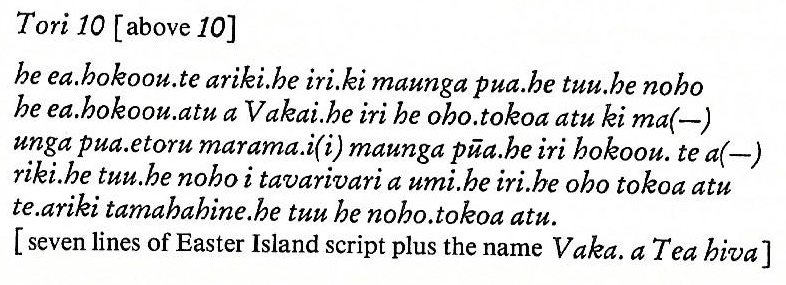
|
Tori 1
E:1001 |
|
10 lines of text relating to
Oroi. |
|
he e(a) hokoou atu a Vakai.he oho.he oo.ki roto |
Again Vakai arose,
went, and entered into the house of King Hotu,
into (the house) Hare Moa Viviri. |
|
ki te hare.o te ariki a Hotu.i
hare moa viviri. |
|
he tuki hokoou te ariki a Hotu.he tupu.
i te iva |
Again Hotu begot (a
child). It grew [he
tupu] for nine months [i
te iva o te marama] and then a boy
was born [he
topa tamaaroa]. He was given the name
[he nape i te
ingoa] Tuu A Hotu Iti (crossed out.
ko te mata iti 'the small eye', wordplay
'the small tribe') A Hotu. |
|
o te marama.he topa
tamaaroa.he nape i te ingoa. |
ko Tuu a hotu iti.
(Crossed out:
ko te mata iti). a Hotu. |
| ... The element
viri
shows that the primal sense is that of causing a
motion in rotation ...
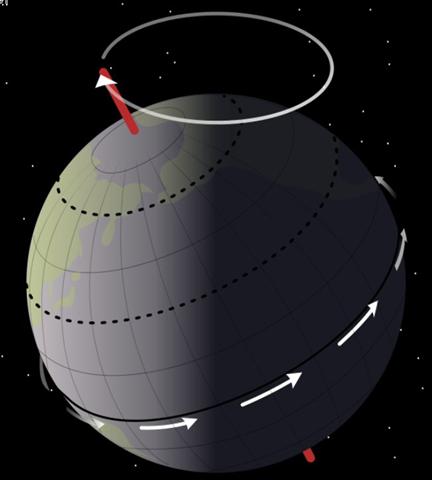
 |
|
E:1002 -
1005, E: 4 - 8 |
|
Tori 9
E:
9 |
| he tuki.hokoōu.a
Hotu.i taana poki. |
Again Hotu begot [he
tuki] a child [poki] in Hare
Moa Viviri. A boy was born [he topa tamaaroa],
and he was given the name [he nape i te ingoa]
Hotu Iti A Hotu. |
| i hare moa viviri.he topa
tamaaroa. |
| he nape i te ingoa.ko
Hotu
iti.a Hotu.he e(-) |
| P Pau.: tukituki,
to strike, to pound, to grind. |
| a.hokoou.a Hotu.he iri ki
hare moa tata(-) |
Again Horu arose [he
ea.hokoou.a Hotu], went up to Hare Moa
Tataka [he iri ki hare moa tataka],
arrived, and stayed there [he tuu.he noho]. |
| ka.he
tuu.he noho. |
|
... There is a couple residing in one place
named Kui and Fakataka [Creating a
Circle]. After the couple stay together for a
while Fakataka is pregnant. So they go
away because they wish to go to another place -
they go. The canoe goes and goes, the wind
roars, the sea churns, the canoe sinks. Kui
expires while Fakataka swims.
Fakataka swims and swims, reaching another
land. She goes there and stays on the upraised
reef in the freshwater pools on the reef, and
there delivers her child, a boy child ...
Vai tagata, semen, sperm (also:
takatea). Churchill.
Vari. 1.
Menstruation, period (also: tiko). 2. To
tack, to veer (nautical); ku-vari-mai-á te
miro, the boat arrives, have veered [around
Rano Kau]. Vanaga. About, circumference,
to turn in a circle; hakavari, pliant, to
bend, square; varivari, about, to go
around; vavari, a garland; varikapau,
circumference, to surround, a compass, to
admire; hiriga varikapau, to go in a
ring; pa varikapau, to close in;
varitakataka (vari-taka 3) to
surround. Churchill. Pau.: Vari, marsh,
mire, dirt. Ta.: vari, dirt, mud. Rar.:
vari, mud. Churchill. Mgv.: Vari,
paste well diluted. Mq.: vaivai, to
dilute, to thin. Ha.: waliwali, soft,
pasty. Churchill.
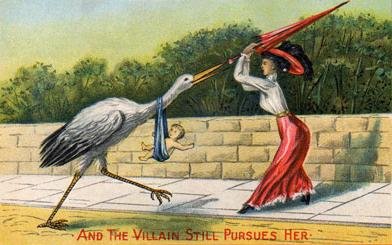 |
| he ea.hokoou.atu.a Vakai.he
iri toko(-) |
Vakai arose again,
also went up to Hare Moa Tataka, arrived, and
lived with the king in Hare Moa Tataka. |
| a atu.ki hare moa tataka.he
tuu he noho.ra(-) |
| ua.ko te ariki.i
hare moa
tataka.he tuki.ho(-) |
| koou.te ariki a Hotu.i taana
poki.he |
Again King Hotu
begot a child [he tuki.hokoou.te ariki a
Hotu.i taana poki]. A boy was born [he
topa.tamaaroa], and he was given the name
Tuu Rano Kau. |
| topa.tamaaroa.he nape i te
ingoa.ko Tuu |
| rano kau. |
| he iri hokoou.te ariki.ki
aro
huri.he tuu. |
After this, the king
went up to Aro Huri, arrived, and stayed there.
Vakai also went up to Aro Huri, arrived, and
stayed there. |
| he noho.he iri hokoou.atu a
Vakai.ki aro |
| huri.he tuu he noho.tokoa
atu.he noho etoru |
They lived in Aro
Huri for three months. |
| marama.i
aro huri. |
| Aro. Face,
front, side (of a figure); ki te aro o ...,
to the front of ... Vanaga. Presence, body,
frontispiece; ki te aro, face to face. P
Pau.: aroga, the visage; ki te aroga,
opposite. Mgv.: aro, presence, before;
i te aro, in the presence of. Mq.: aó,
face, in the presence of, before. Ta.: aro,
face, front, presence, view. It is probable that
more than one word is confounded in alo.
The significations which appear in Southeast
Polynesia are most likely derived from a
Tongafiti alo and do not appear in
Nuclear Polynesia. The alo belly and
alo chief which do occur in Nuclear
Polynesia are also probably Tongafiti, for in
Samoa and Tonga they are honorific and applied
only to folk of rank, a good indication of
borrowing by the Proto-Samoans from Tongafiti
masters. Churchill. In the Hawaiian group, the
western portion or side of an island was called
'the front', ke alo, of the land, and the
eastern side was called 'the back', ke kua.
The reason of such designations must be sought
in the fact of the arrival of the inhabitants
from the west. Fornander. Huri. 1. To
turn (vt.), to overthrow, to knock
down: huri moai, the overthrowing of the
statues from their ahus during the period
of decadence on the island. 2. To pour a
liquid from a container: ka huri mai te vai,
pour me some water. 3. To end a lament, a
mourning: he huri i te tagi, ina ekó tagi
hakaou, with this the mourning (for the
deceased) is over, there shall be no more
crying. 4. New shoot of banana: huri
maîka. Vanaga. 1. Stem. P Mgv.: huri,
a banana shoot. Mq.: hui, shoot, scion.
2. To turn over, to be turned over onto another
side, to bend, to lean, to warp; huri ke,
to change, to decant; tae huri ke,
invariable; huri ke tahaga no mai, to
change as the wind; tae huri, immovable;
e ko huri ke, infallible; huhuri,
rolling; hakahuri, to turn over;
hakahuri ke, to divine. P Pau.: huri,
to turn. Mgv.: huri, uri, to turn
on one side, to roll, to turn upside down, to
reverse. Mq.: hui, to turn, to reverse.
3. To throw, to shoot. 4. To water, to wet. 5.
To hollow out. Hurihuri: 1. Wrath, anger;
kokoma hurihuri, animosity, spite, wrath,
fury, hate, enmity, irritable, quick tempered,
to feel offended, to resent, to pester;
kokoma hurihuri ke, to be in a rage. 2. (huri
4) hurihuri titi, to fill up. 3. To
polish. 4. (uriuri). Hurikea, to
transfigure, to transform. Churchill. Mq.
huri, resemblance. Sa.: foliga, to
resemble. Churchill. |
|
Tori 10
E:
10 |
| he ea.hokoou.te ariki.he
iri.ki maunga pua.he tuu.he noho |
The king arose again [he
ea.hokoou.te ariki] and went up to Maunga
Pua [he iri.ki maunga pua], arrived and
stayed there [he tuu.he noho]. |
| Maúga. 1.
Last; aga maúga o te Ariki o Hotu Matu'a,
King Hotu Matua's last work. 2. Hill, mountain.
Mouga, moúga. Last; vânaga moúga o te
Ariki O Hotu Matu'a, the last words of King
Hotu Matu'a. Vanaga. Mauga kore,
impalpable. Mouga. 1. Enough, that's all,
at last. 2. Mountain, ridge of hills; mouga
iti, hillock; tua mouga, mountain
top; hiriga mouga; hillside, declivity,
slope. P Pau.: mahuga, mountain. Mgv.:
mou, maga, mountain. Mq.: mouna,
mouka, peak or crest of a mountain. Ta.:
maua, moua, mountain. 3.
Extinction, end, interruption, solution; te
mouga o te hiriga, end of a voyage;
pagaha mouga kore, without consolation. 4.
To get. Churchill. Pua. 1. A
zingiberacea (plant of which few specimens
are left on the island). 2. Flower: pua ti,
ti flower, pua taro, taro flower,
pua maúku pasture flower; pua nakonako,
a plant which grows on steep slopes and produce
red, edible berries. 3. Pua tariga (or
perhaps pu'a tariga), anciently, hoops
put in earlobes. 4. The nanue fish when
young and tender. Puapua, summit, top,
upper part; te puapua o te maúga, the top
of the mountain; te puapua kupega, the
upper part of a fishing net. Vanaga. Pu'a.
1. (Modern form of pu'o), to cover up
something or oneself, to put on; ka-pu'a te
ha'u, put on your hat; ka-pu'a-mai te
nua, cover me up with a blanket. 2. To
respond to the song of the first group of
singers; to sing the antistrophe; he-pu'a te
tai. 3. To help; ka-pu'a toou rima ki a
Timo ite aga, help Timothy with the work. 4.
Pu'a-hare, to help a relative in war or
in any need; ka-oho, ka-pu'a-hare korua, ko
ga kope, go, give your relative a hand,
lads. 5. To speak out in someone's favour; e
pu'a-mai toou re'o kia au, speak in my
favour, intercede for me. Pu'apu'a, to
hit, to beat. Vanaga. 1. Flower, ginger, soap;
pua mouku, grass. 2. To grease, to coat with
tar, to pitch; pua ei meamea, to make
yellow. Puapua, a piece of cloth. Mgv.:
pua, a flower, turmeric, starchy matter
of the turmeric and hence soap. Mq.: pua,
a flower, soap. Ta.: pua, id. Ma.:
puapua, cloth wrapped about the arm.
Churchill.
Pu.
1. To come forward to greet someone met on
the road; to walk in front, to go in front:
ka-pú a mu'a, let them go first. 2. Pú a
mu'a, to intervene, to come to someone's
rescue; he-pú-mai a mu'a, he-moaha, he
came to my rescue and saved my life. 3. Ancient
expression: ai ka-pú, ai ka-pú, tell us
frankly what you think. 4. Hole, opening,
orifice; well; circumference, rotundity;
swirling water; pú-haga, vaginal orifice;
pú-henua (also just henua),
placenta. He pú henua nó te me'e aau,
he-oti-á; ina-á me'e ma'u o te rima
i-topa-ai koe, a placenta was all you had,
it is a past thing now; you held nothing in your
hands when you were born (stern words said to
children to make them realize that they must not
be demanding, since they were born naked and
without possessions). 5. To dig out (tubers):
he-pú i te uhi, to dig out yams. Vanaga. 1.
A trumpet. P Mgv.: pu, a marine shell.
Mq.: pu, conch shell. Ta.: pu,
shell, trumpet. 2. A small opening, hole,
mortise, stirrup, to pierce, to perforate, to
prick; pu moo naa, hiding place;
taheta pu, fountain, spring; hakapu,
to dowel, to pierce, to perforate. PS Sa., Fu.,
Niuē: pu,
a hole. Churchill. Mq.: Pu,
source, origin. Ma.: pu, root, origin,
foundation. Churchill.
Ii, to deteriorate, to go bad.
Churchill.
Possibly: Maunga pua = Last flower and
i(i) maunga pūa = ii maunga pu-ua
= First rain to emerge from the mountain
deterioted. |
| he ea.hokoou.atu a Vakai.he
iri.he oho.tokoa atu ki ma(-) |
Vakai also arose [he
ea.hokoou.atu a Vaka], went up
[to Maunga Pua - he iri.he oho.tokoa atuki maunga pua.] |
| unga pua.etoru marama.i(i)
maunga pūa.he
iri hokoou.te a(-) |
[3 moons (lunations)
- etoru marama. - (And) the spring
rains had deterioted - i(i)
maunga pūa
= ii maunga pu-ua.
→ At the time of
rongorongo
there were 3 lunations after 0h before the Sun
reached Betelgeuze, i.e. 39 + 49 days counted
from March 21.] |
|
... 'Yes, for he was a monstrous thing and
fashioned marvelously, nor was he like to any
man that lives by bread, but like a wooded peak
of the towering hills, which stands out apart
and alone from others.' Odysseus, choosing
twelve men, the best of the company, left his
ships at shore and sallied to the vast cave. It
was found stocked abundantly with cheeses,
flocks of lambs and kids penned apart, milk
pails, bowls of whey; and when the company had
entered and was sitting to wait, expecting
hospitality, the owner came in, shepherding his
flocks. He bore a grievous weight of dry wood,
which he cast down with a din inside the cave,
so that in fear all fled to hide. Lifting a huge
doorstone, such as two and twenty good
four-wheeled wains could not have raised from
the ground, he set this against the mouth of the
cave, sat down, milked his ewes and goats, and
beneath each placed her young, after which he
kindled a fire and spied his guests ...
|
 |
Poki atariki, eldest child,
first-born. (Le fils ainé.) |
|
BETELGEUZE (*88.3) |
|
| riki.he tuu.he noho i
tavarivari a umi.he iri.he oho tokoa atu |
[Once again the king
went up - he iri hokoou.te ariki] arrived, and stayed in Tavarivari A Umi [he tuu.he noho i tavarivari
a umi]. The queen also went up there [he iri.he
oho tokoa atu te.ariki tamahahine]. She
arrived and she too stayed (there) [.he tuu
he noho.tokoa atu.]. |
| te.ariki tamahahine.he tuu he
noho.tokoa atu. |
|
Tavari,
the plant
Polygonum acuminatum grows on the
crater lakes in close association with rushes
and seems to have been used for medicinal
purposes. Barthel 2.
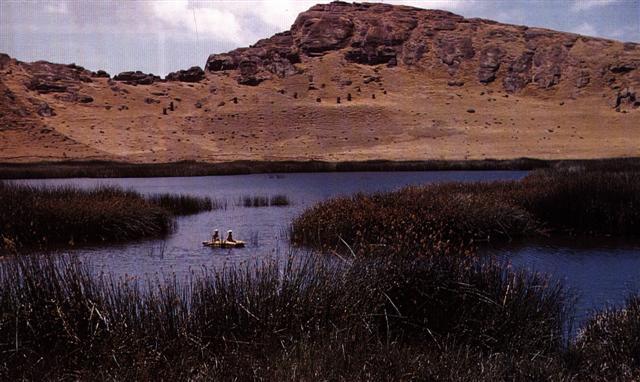
Vari.
1. Menstruation, period (also: tiko).
2. To tack, to veer (nautical); ku-vari-mai-á
te miro, the boat arrives, have veered
[around Rano Kau]. Vanaga. About,
circumference, to turn in a circle; hakavari,
pliant, to bend, square; varivari, about,
to go around; vavari, a garland;
varikapau, circumference, to surround, a
compass, to admire; hiriga varikapau, to
go in a ring; pa varikapau, to close in;
varitakataka (vari-taka 3)
to surround. Churchill. Pau.: Vari,
marsh, mire, dirt. Ta.: vari, dirt, mud.
Rar.: vari, mud. Churchill. Mgv.: Vari,
paste well diluted. Mq.: vaivai, to
dilute, to thin. Ha.: waliwali, soft,
pasty. Churchill. |
|
7
lines of summary of the signs of the Jaussen
list plus the name Vaka. a Tea hiva.
(The
Eighth Land, p. 290.)
.jpg) |
|
Te Kioe Uri (40-52) |
|
ngaoho |
naunau. |
uku koko |
nehenehe |
poporo. |
|
Nahe.
Ta.: Angiopteris erecta [maybe
evecta?: 'Mule's-foot Fern']. Sa.:
nase, the giant fern. Churchill. Bishop
Jaussen: crustacé. Barthel. In Jamaica the
species Angiopteris evecta
['Mule's-foot Fern'] is widely naturalized
and is registered as an invasive species.
The plant was introduced by Captain Bligh
from Tahiti as a staple food for slaves and
cultivated in the Castleton Gardens in 1860.
From there it was able to distribute itself
throughout the eastern half of the island.
Wikipedia.
... I remember from
somewhere in Heyerdahl's books that he
considered it significant that neke-neke
was a special word in the vocabulary of
Easter Island, it meant 'walking without
legs, walking by moving the weight this side
and that slowly advancing forward'. He had
discovered the word when he asked how the
statues had been moved - they walked (neke-neke)
was the answer ...
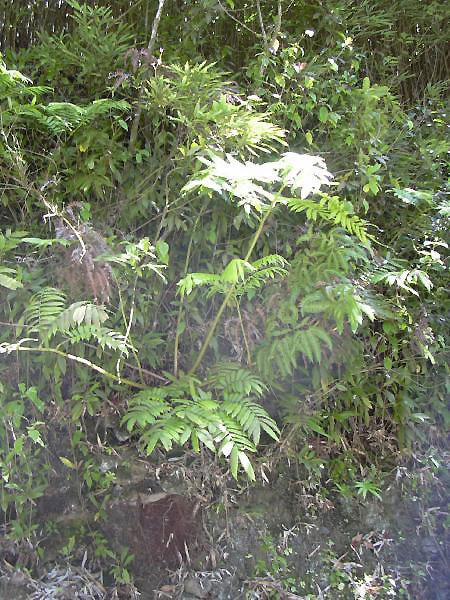 |
|
APRIL 11 |
12 |
4-13 → 14
* 29½ |
4-14→
*41.4 (104) |
15 |
 |
 |
 |
 |
 |
|
Ga1-21 |
Ga1-22 |
Ga1-23 |
Ga1-24 |
Ga1-25 |
|
ο Aurigae (85.8), γ Leporis (85.9)
YANG MUN (α Lupi)
|
μ
Columbae,
SAIPH
(Sword) =
κ
Orionis
(86.5),
τ
Aurigae,
ζ
Leporis (86.6) |
υ Aurigae (87.1), ν Aurigae (87.2),
WEZN (Weight) = β Columbae,
δ Leporis (87.7),
TZE (Son) = λ Columbae
(87.9) |
Ardra-6 (The Moist One) /
ANA-VARU-8 (Pillar to sit by)
χ¹
Orionis,
ξ
Aurigae (88.1),
BETELGEUZE
=
α
Orionis
(88.3),
ξ
Columbae (88.5),
σ
Columbae (88.7) |
η
Leporis (89.0),
PRAJA-PĀTI (Lord of Created Beings) =
δ
Aurigae,
MENKALINAN (Shoulder of the Rein-holder) = β
Aurigae, MAHASHIM (Wrist) = θ Aurigae,
and
γ
Columbae (89.3),
π
Aurigae (89.4),
η
Columbae (89.7)
*48.0 = *89.4 - *41.4 |
|
June 14 (165) |
15 |
16 |
17 (168) |
18 |
|
°June 10 (161) |
11 |
12 |
13 (164) |
14 |
|
'May 18 (*58) |
19 |
20 |
21 (141) |
22 |
|
"May 4 (*44) |
5 (136 = 125 + 12) |
Vaitu Potu
6 |
7 (127) |
8 |
|
24 = 165
- 141 |
25 = 501
- 365 - 111 |
26 |
127 -
100 |
28 |
|
ALCYONE (*56) |
31 |
BETELGEUZE (*88) |
52 |
AL MINHAR AL ASAD (*141) |
10 |
REGULUS (*152) |
|
May 16 (501 = 80 + 56) |
June 17 (168 = 80 + 88) |
Aug 9 (221 = 80 + *141) |
Aug 20 (232 = 91 + *141) |
|
'April 19 (474 = 136 - 27) |
'May 21 (141 = 168 - 27) |
'July 13 (194 = 221 - 27) |
'July 24 (205 = 232 - 27) |
|
"April 5 (460 = 136 - 41) |
"May 7 (127 = 168 - 41) |
"June 29 (180 = 221 - 41) |
"July 10 (191 = 232 - 41) |
|
MARCH 13 (437 = 136 - 64) |
APRIL 14 (104 = 168 - 64) |
JUNE 6 (157 = 221 - 64) |
JUNE 6 (157 = 221 - 64) |
|
501 - 141 = 360 = 80 + *280 |
168 - 141 = 27 = 393 = 80 + *313
= 80 - 53 |
221 - 141 = 80 → *0 |
232 - 141 = 91 = 80 + *11 |
|

... The
earliest depiction that has been linked to
the constellation of Orion is a prehistoric
(Aurignacian) mammoth ivory carving found in
a cave in the Ach valley in Germany in 1979.
Archaeologists have estimated it to have
been fashioned approximately 32,000 to
38,000 years ago ... The artist cut,
smoothed and carved one side (A)
and finely notched the other side (B)
and the edges. Side A contains the
half-relief of an anthropoidal figure,
either human or a human-feline hybrid, known
as the 'adorant' because its arms are raised
as if in an act of worship.
|
Egyptian jubilation |
 |
Phoenician
he |
 |
Greek
epsilon |
Ε
(ε) |
|
Wikipedia points
at the Egyptian gesture with
arms held high as a Sign of
jubilation, which may have been
the origin (via Phoenician he)
of epsilon.

 |
On side B together with the four
edges is a series of notches that are
clearly set in an intentional pattern. The
edges contain a total of 39 notches in
groups of 6, 13, 7 and 13. A further 49
notches on side B are arranged in
four vertical lines of 13, 10, 12 and 13
respectively plus a further notch that could
be in either of the middle two lines ... The
grouping of the notches on the plate
suggests a time-related sequence. The total
number of notches (88) not only coincides
with the number of days in 3 lunations
(88.5) but also approximately with the
number of days when the star Betelgeuse (α
Ori) disappeared from view each year between
its heliacal set (about 14 days before the
spring equinox around 33,000 BP) and its
heliacal rise (approximately 19 days before
the summer solstice). Conversely, the
nine-month period when Orion was visible in
the sky approximately matched the duration
of human pregnancy, and the timing of the
heliacal rise in early summer would have
facilitated a ‘rule of thumb’ whereby, by
timing conception close to the reappearance
of the constellation, it could be ensured
that a birth would take place after the
severe winter half-year, but leaving enough
time for sufficient nutrition of the baby
before the beginning of the next winter.
There is a resemblance between the
anthropoid on side A and the constellation
Orion. None of these factors is convincing
when taken in isolation, because of the high
probability that apparently significant
structural and numerical coincidences might
have arisen fortuitously. However, taken
together they suggest that the anthropoid
represented an asterism equivalent to
today’s constellation of Orion, and that the
ivory plate as a whole related to a system
of time reckoning linked to the moon and to
human pregnancy. If so, then ethnographic
comparisons would suggest that the
Geißenklösterle culture related their
‘anthropoid’ asterism to perceived cycles of
cosmic power and fertility ... |
|
Te Kioe Uri (40-52) |
Te Piringa Aniva (53-65) |
|
kavakava atua |
kohe. |
nehenehe |
pua |
harahara |
hua taru. |
makere |
|
APRIL 16
(*26) |
17 (472) |
18 (*393) |
19 |
20
(*30) |
21
(111) |
22 |
 |
 |
 |
 |
 |
 |
 |
|
Ga1-26 |
Ga1-27 |
Ga1-28 |
Ga1-29 |
Ga1-30 |
Ga2-1 |
Ga2-2 |
|
μ Orionis (90.3), χ² Orionis (90.5) |
6h (91.3 = 273.4 - 182.1)
ν
Orionis
(91.4),
θ
Columbae (91.5),
π
Columbae (91.6)
*50.0 = *91.4 - *41.4 = *232.0 - *172.0 |
ξ Orionis
(92.5) |
Al Han'ah-4 (Brand) /
Maru-sha-pu-u-mash-mashu-7 (Front of the
Mouth of the Twins)
TEJAT PRIOR
=
η
Gemini
(93.4),
γ
Monocerotis (93.5),
κ
Aurigae (93.6),
κ
Columbae (93.8)
*52.0 = *93.4 - *41.4 |
FURUD
= ζ Canis Majoris
(94.9) |
Well-22 (Tapir) /
Arkū-sha-pu-u-mash-mashu-8
(Back of the Mouth of the Twins)
δ
Columbae (95.2),
TEJAT POSTERIOR
=
μ
Gemini,
MIRZAM (The Roarer) = β Canis Majoris
(95.4),
CANOPUS
(Canopy) =
α
Carinae
(95.6),
ε
Monocerotis (95.7),
ψ1
Aurigae (95.9)
*54.0 = *95.4 - *41.4 |
no star listed (96) |
|
...
The Pythagoreans make Phaeton
fall into Eridanus, burning part of its
water, and glowing still at the time
when the Argonauts passed by. Ovid
stated that since the fall the Nile
hides its sources. Rigveda 9.73.3 says
that the Great Varuna has hidden the
ocean. The Mahabharata tells in its own
style why the 'heavenly Ganga' had to be
brought down. At the end of the Golden
Age (Krita Yuga) a class of
Asura who had fought against the
'gods' hid themselves in the ocean where
the gods could not reach them, and
planned to overthrow the government. So
the gods implored Agastya
(Canopus, alpha Carinae = Eridu) for
help. The great Rishi did as he was
bidden, drank up the water of the ocean,
and thus laid bare the enemies, who were
then slain by the gods. But now, there
was no ocean anymore! Implored by the
gods to fill the sea again, the Holy One
replied: 'That water in sooth hath been
digested by me. Some other expedient,
therefore, must be thought of by you, if
ye desire to make endeavour to fill the
ocean ...
 |
|
June
19 (170) |
20
(513 / 3) |
SOLSTICE |
22
(*93) |
23
(174) |
ST
JOHN'S DAY |
25 |
|
°June
15 (*86) |
16 |
17 (168) |
18 |
19 |
20 (*91) |
SOLSTICE |
|
'May 23 (*63) |
24 (12 * 12) |
25 (145) |
26 |
27 |
28 (*68) |
29 |
|
9
(*49 = 7 * 7) |
"May
10 (130) |
Vaitu Potu 11 |
12
(*52) |
12 (*418) |
14
(*54) |
15
(500) |
|
29 =
170 - 141 |
130 -
100 |
31 |
32 |
33 |
34 |
35 =
*55 -
*20 |
|
CLOSE
TO THE FULL MOON: |
|
OCT
16 |
17
(290) |
18 (*394 - *183) |
19
(475 - 183) |
20 |
21
(*214) |
22
(295) |
 |
 |
 |
 |
 |
 |
 |
|
Ga8-6 (31 + 178) |
Ga8-7 (210) |
Ga8-8 |
Ga8-9 |
Ga8-10 |
Ga8-11 (214) |
Ga8-12 |
|
Winnowing Basket-7 (Leopard)
18h (273.4)
*232.0 = *273.4 - *41.4
NASH
(Point) =
γ
Sagittarii
(273.7),
θ
Arae (273.8) |
ZHŌNGSHĀN =
ο
Herculis
(274.0),
π
Pavonis (274.6) |
ι Pavonis (275.1),
POLIS = μ Sagittarii
(275.9)
MENKAR (α Ceti) |
η Sagittarii (276.9) |
Purva Ashadha-20 (Elephant Tusk, Fan,
Winnowing Basket) |
KAUS BOREALIS = λ Sagittarii
(279.3) |
|
KAUS MEDIUS =
δ
Sagittarii,
κ
Lyrae (277.5),
TUNG HAE (Heavenly Eastern Sea) =
η
Serpentis
(277.7),
SHAOU PIH (Minor Minister) =
φ
Draconis
(277.8),
KWEI SHE =
χ
Draconis
(277.9 |
φ
Oct. (278.1),
KAUS AUSTRALIS =
ε
Sagittarii
(278.3),
ξ
Pavonis (278.4),
AL ATHFAR (The Talons of the Falling
Eagle)
=
μ
Lyrae
(278.6)
*237.0 = *278.4 - *41.4 |

... As has already been mentioned, the
Delphians worshipped Dionysus once a
year as the new-born child, Liknites,
'the Child in the Harvest Basket', which
was a shovel-shaped basket of rush and
osier used as a harvest basket, a
cradle, a manger, and a winnowing-fan
for tossing the grain up into the air
against the wind, to separate it from
the chaff. The worship of the Divine
Child was established in Minoan Crete,
its most famous early home in Europe. In
1903, on the site of the temple of
Dictaean Zeues - the Zeus who was yearly
born in Rhea's cave at Dicte near
Cnossos, where Pythagoras spent 'thrice
nine hallowed days' [27] of his
initiation - was found a Greek hymn
which seems to preserve the original
Minoan formula in which the
gypsum-powdered, sword-dancing Curetes,
or tutors, saluted the Child at his
birthday feast. In it he is hailed as
'the Cronian one' who comes yearly to
Dicte mounted on a sow and escorted by a
spirit-throng, and begged for peace and
plenty as a reward for their joyful
leaps ... |
|
Dec
19 (*273) |
20
(354) |
SOLSTICE |
22 |
23
(174 + 183) |
X-MAS
EVE |
25 (359) |
|
°Dec 15 (*269) |
16 (350) |
17 |
18 |
19 |
20 (354) |
21 |
|
'Nov 22 (*246) |
23 |
24 (328) |
25 |
26 (*250) |
27 |
28 (332) |
|
"Nov
8 |
9 |
10
(314) |
11 |
12
(*236) |
13 |
14 |
|
*273
- *141 |
*133 |
*134 |
*135 |
*236
- *100 |
*137 |
*138 |
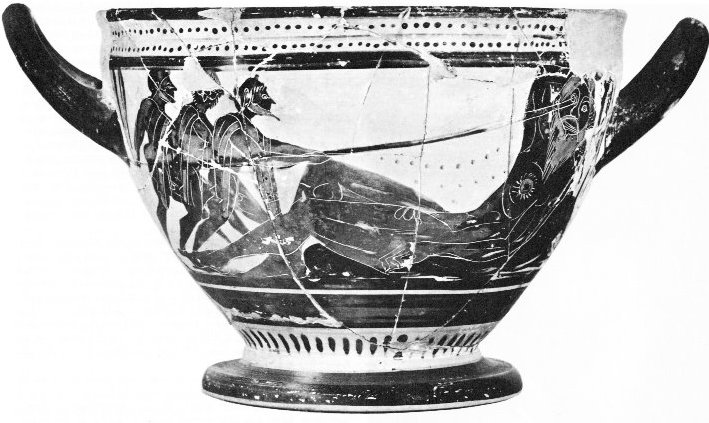
|